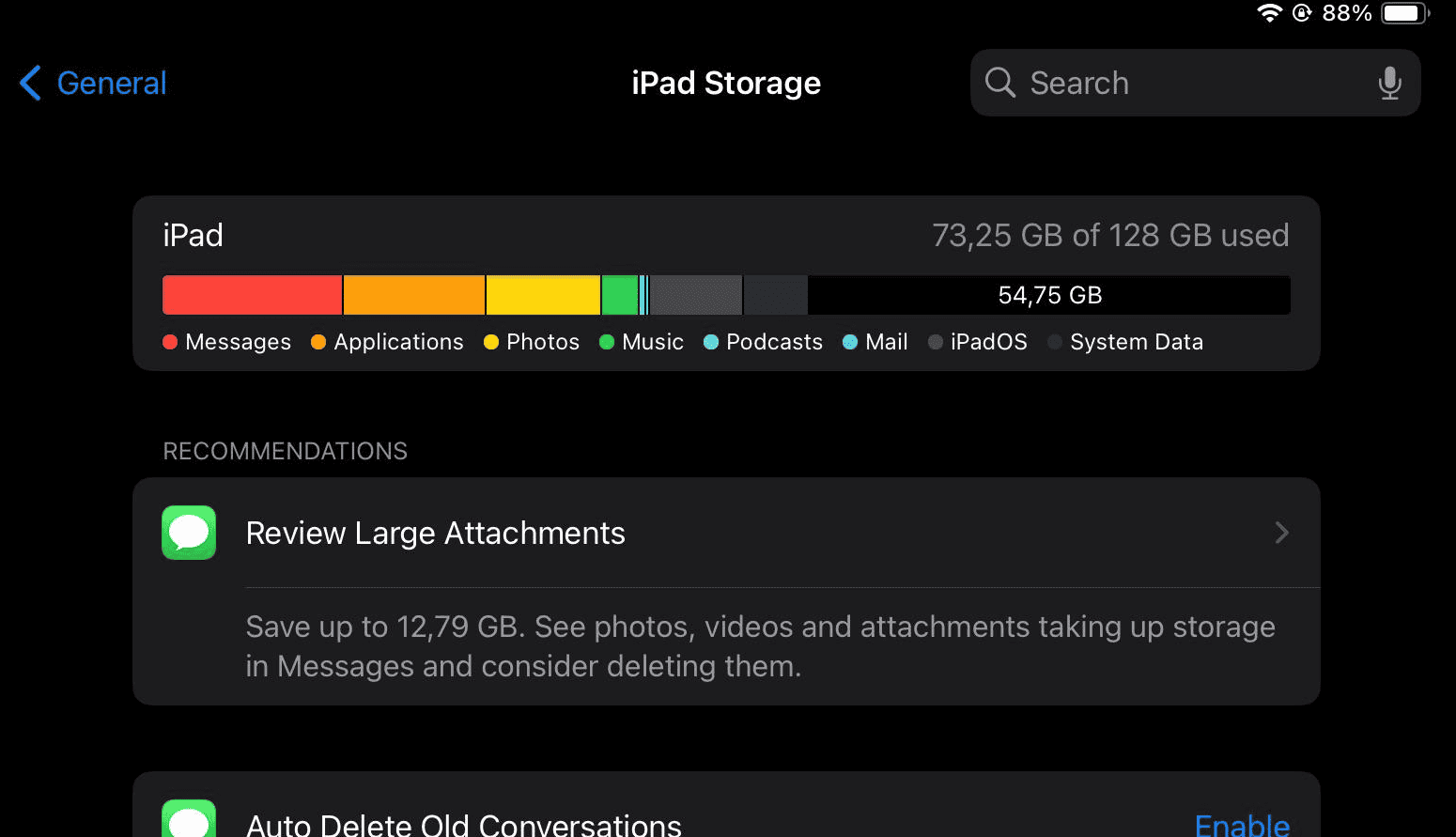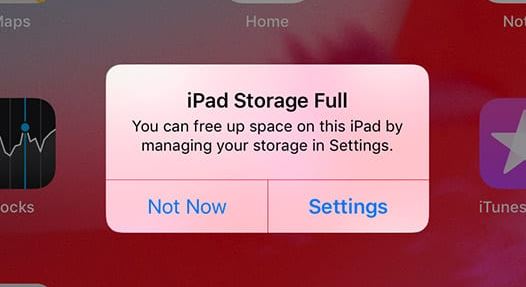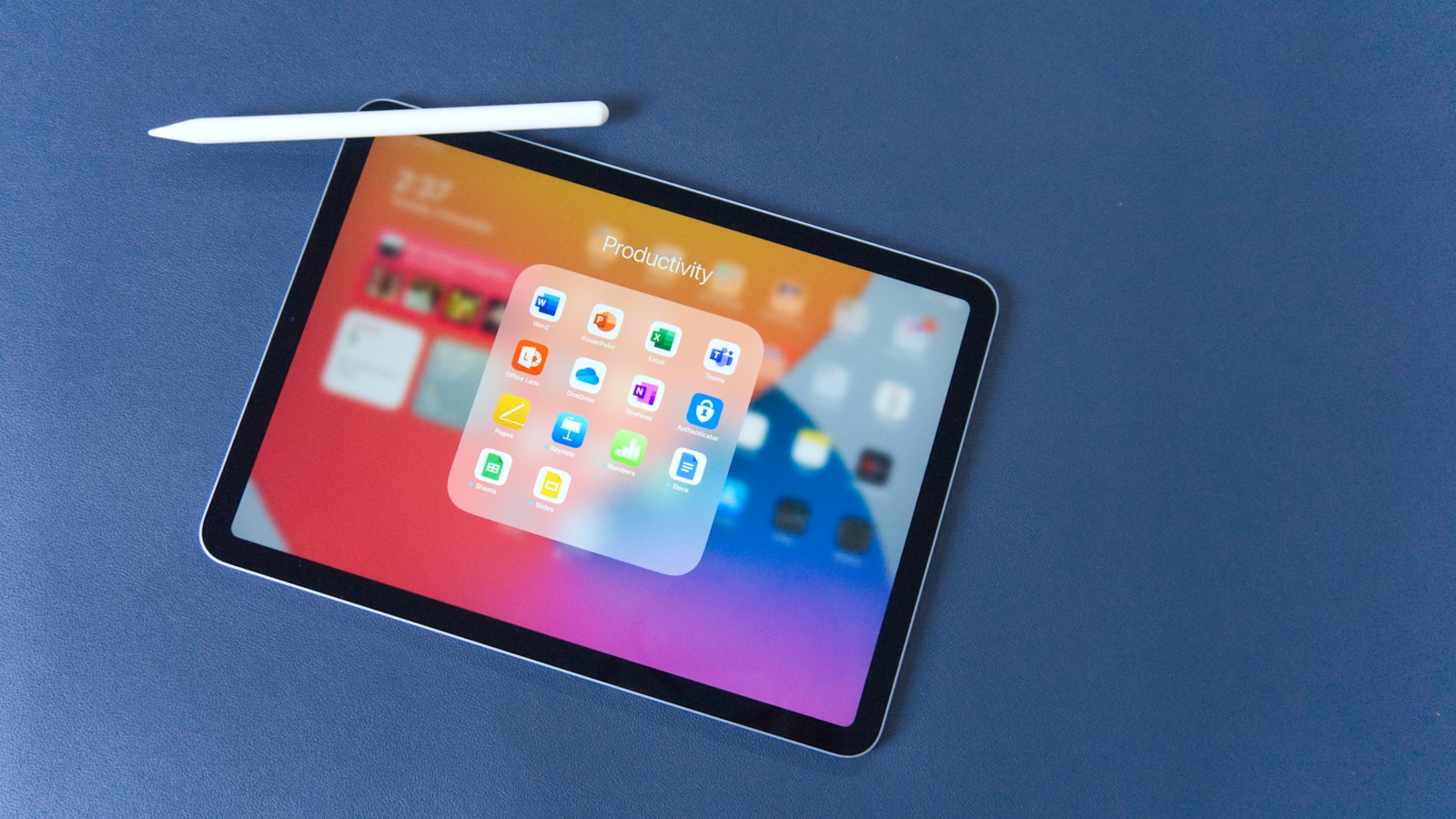iPads are necessary for work, entertainment, and creativity, however, with all the apps, photos, videos, and other files you’ll start accumulating space can become an issue. While there’s no real way to add physical storage space internally, there are some methods available to you to increase available storage using other means.
If you’re starting to see “Storage Full” notifications, don’t worry! This guide will give you practical and effective ways to increase your iPad’s available storage, ensuring you have enough space for all your needs.
Simple Hacks to Maximize iPad Storage
The iPad comes with various internal storage options, and you can’t upgrade this internal storage later. Running out of storage on your iPad can be a frustrating experience, especially when you’re trying to download a new app, take photos, or record videos. Fortunately, there are several effective ways to increase your iPad’s available storage space, allowing you to enjoy your device to its fullest potential.
Declutter Your Apps and Media

One of the simplest ways to free up space is to delete apps and media you no longer use. Go to Settings > General > iPad Storage to see which apps are taking up the most space. You can delete apps directly from this menu or by long-pressing the app icon on your home screen and tapping “Remove App.”
For photos and videos, consider transferring them to a cloud storage service like iCloud, Google Photos, or Dropbox. You can also delete them from your device once they’re safely backed up.
Utilize Cloud Storage
Cloud storage services are a great way to store your files off your device, freeing up valuable space. Apple’s iCloud offers 5GB of free storage, and you can upgrade to a larger plan for a monthly fee. Other popular options include Google Photos, Dropbox, and OneDrive.
Manage Messages and Mail
If you’re a frequent texter or email user, your message and mail apps can accumulate a significant amount of data over time. Consider deleting old messages and conversations, and adjust your settings to automatically delete messages after a certain period.
Clear Safari’s Cache and Website Data
Safari’s cache and website data can take up a surprising amount of space. To clear it, go to Settings > Safari > Clear History and Website Data.
Offload Unused Apps
Offloading apps is a handy feature that allows you to remove an app from your device while keeping its data. This means you can reinstall the app later without losing your progress or settings. To offload an app, go to Settings > General > iPad Storage and tap on the app you want to offload. Then, tap “Offload App.”

Additional Tips
- Optimize Photos: Go to Settings > Photos and enable “Optimize iPad Storage” to store smaller versions of your photos on your device, with the full-resolution versions stored in iCloud.
- Stream Music and Videos: Instead of downloading music and videos, consider streaming them from services like Apple Music, Spotify, or Netflix.
- Use External Storage: If your iPad has a USB-C port, you can connect an external hard drive or flash drive to expand your storage capacity.
The Most Effective Ways To Increase Your iPad’s Available Storage
| Method | Description | Pros | Cons |
|---|---|---|---|
| Delete Unused Apps | Go through your app list and remove any you don’t use regularly. | Quick and easy space saver. | You might lose app data if you don’t reinstall. |
| Offload Apps | Keep app data and settings, but remove the app itself. Reinstall through the App Store when needed. | Saves space while preserving data. | Requires redownloading apps to use them. |
| Manage Photos & Videos | Delete unwanted photos/videos, transfer them to a computer/external drive, or use cloud storage for backups. | Photos/videos take up significant space. | Can be time-consuming to sort through. |
| Clear Browser Cache | In Safari settings, clear website history and data. | Frees up space temporarily. | Might delete saved logins or website preferences. |
| Manage Messages | Adjust “keep messages” to 30 days or 1 year to delete old threads. Delete large attachments in messages. | Texts and attachments can take up space. | You’ll lose old conversations. |
| Optimize iCloud Storage | Subscribe to iCloud and store photos/videos in the cloud. Choose to optimize iPad storage to keep lower-resolution versions on your device. | Frees up significant space. | Requires a subscription fee. |
| Use External Storage | Connect compatible external SSDs, hard drives, or flash drives (with an adapter) to your iPad using the Files app. | Offers large storage expansion. | Requires additional accessories. |
Important Considerations:
- Check your storage usage: Go to Settings -> General -> iPad Storage to see a breakdown of what’s using up space on your device.
- iCloud: If you’re not already using iCloud, a subscription plan offers a simple way to offload less-used content to the cloud.
Understanding iPad Storage Capabilities
Internal Storage Options:
- Base Models: Typically start at 64GB
- Higher-End Models: Range up to 2TB
Expanding Storage:
It is not an option to physically upgrade the internal storage of an iPad after purchase. However, users have additional options to manage their storage needs.
- Cloud Services: A popular method to extend storage capabilities.
- External Drives: Devices such as external hard drives or flash drives can be connected.
- File Management: Regularly removing unnecessary files and apps helps to free up space.
Tips for Managing iPad Storage:
- Regularly review installed apps and delete those not in use.
- Store photos and videos on cloud services like iCloud.
- Use streaming services for music and movies instead of storing them on the device.
Critical Considerations:
- App Size: Current apps can take more space than before.
- Media Files: High-quality photos and videos quickly consume storage.
- Usage Needs: Choose an iPad with enough storage for your specific situation, considering future needs as well.
When making a decision, balance the cost against how you plan to use the iPad. For those heavily invested in the Apple ecosystem, opting for more internal storage might be a wise choice. However, for users predominantly streaming content and utilizing cloud services, a base model could suffice.
Maximizing Built-in Storage
When it comes to increasing the iPad’s storage capacity, there’s a lot you can do without additional hardware. By thoroughly managing the device’s storage, you can make sure every gigabyte is used effectively.
Managing Photos and Videos
Photos and videos often consume the most space on an iPad. Regularly transferring these files to a computer or an online photo library can keep your device’s storage from filling up. iCloud offers a convenient backup solution, where photos and videos can sync automatically. Consider enabling the iCloud Photo Library to store full-resolution images in the cloud and keep lighter versions on your device.
Organizing Apps and Games
Apps and games can take up unnecessary space, especially if they’re seldom used. Review your app list and offload unused apps without losing data, which is a built-in feature within iOS. Here’s how to do it:
- Go to Settings.
- Tap General, then iPad Storage.
- Select the app you want to offload.
- Tap Offload App.
This will remove the app but keep its data, allowing you to reinstall it later without starting over.
Leveraging Cloud Services
Cloud-based storage services like iCloud, Dropbox, or Google Drive allow you to store documents and files online, freeing up local space. Use these services to shift non-essential files from your iPad to the cloud. For documents and other important files, syncing with iCloud ensures they’re accessible from any device with your Apple ID. Upgrading your iCloud storage plan can provide additional space for a monthly fee.
Tips for Storing Music and Movies
Instead of saving large music and movie files on your iPad, opt for streaming services like Apple Music, Spotify, or Netflix. If you own music that’s not available on these platforms, iTunes Match is a service that can upload your music library to iCloud, letting you stream your songs without storing them locally. This can significantly reduce the amount of storage space music occupies.
By implementing these strategies, users have the tools they need to keep their iPad’s storage space neat and thoroughly organized, ensuring that they can make the most out of their device without running into storage issues.
Expanding Storage with External Solutions
While iPads come with fixed internal storage, users can turn to external solutions to carry more files, photos, and videos.
Utilizing External Storage Devices
iPads, through their USB-C or Lightning connectors, can connect to a range of external storage devices. These include USB drives and external hard drives. For those devices that require more power, an external power source may be necessary to facilitate the connection to the iPad.
Exploring Memory Card Options
Another storage expansion option is using an SD card reader that is compatible with the iPad. Users can insert their memory cards into the reader, which then plugs directly into the iPad’s port, allowing them to transfer and store files.
Accessing External Services
Cloud storage solutions like Dropbox and Google Drive are also viable for iPad users. With an internet connection, these services enable the storing and accessing of files remotely, relieving the iPad’s internal memory. Wi-Fi is a necessity to make the most of these services, ensuring smooth and reliable access to files stored in the cloud.
Understanding iCloud Storage
Expanding an iPad’s memory can be confusing, but iCloud storage offers a convenient way to do it. With iCloud, users can keep their files and photos accessible across all their devices.
iCloud Storage Plans
Apple provides every iCloud user with 5 GB of free storage tied to their Apple ID. This amount is fine for small backups and a limited number of photos, but users who need more space have options to upgrade. Current iCloud storage plans include 50 GB, 200 GB, and 2 TB options. The monthly cost for additional storage varies by country, starting at $0.99 for 50 GB in the United States.
Here’s a brief overview of the plans:
- Free Plan: 5 GB
- 50 GB Plan: $0.99/month
- 200 GB Plan: $2.99/month (allows sharing with family)
- 2 TB Plan: $9.99/month (also allows sharing with family)
Optimizing iCloud Usage
To make the most of the iCloud storage plan, users should review what is currently backed up. This can be done by going to Settings > [your name] > iCloud, and then tapping Manage Storage or Manage Account Storage. From there, users can see what is consuming their space and choose to stop backing up certain non-essential apps to conserve available storage.
Users should consider regularly:
- Deleting unneeded backups
- Removing large files that aren’t needed
- Browsing through photos and videos to delete duplicates or unnecessary media
By managing their iCloud storage effectively, users can ensure that their iPads have access to their most important files while keeping costs as low as possible.
Streamlining iPad Storage Management
Managing iPad storage doesn’t have to be a daunting task. With the right tools and habits, you can ensure your device remains fast and efficient.
Automating Backups and Syncing
Regular backups are crucial for protecting your data. Automate the process by enabling iCloud Backup under Settings > [Your Name] > iCloud > iCloud Backup. This ensures that your iPad backs up daily when connected to power and Wi-Fi. For music, consider a subscription to iTunes Match, which uploads your music library to iCloud and frees up local storage.
Cleaning and Offloading Unused Data
Keep your iPad’s storage space available by regularly reviewing and removing content you no longer use. Settings > General > [iPad] Storage lets you see which apps take up the most space. You can offload unused apps—this removes the app but keeps its data just in case you reinstall it later.
Using the Files App for Organization
The Files app is a handy tool for keeping your documents in check. It allows you to browse, search, and organize your files across various locations, including iCloud Drive and third-party cloud services. Use folders and tags to keep everything easy to find, and delete files you no longer need to ensure your storage doesn’t become cluttered.
Techniques for Efficient Storage Usage
Managing the storage on an iPad can be a bit like a puzzle, figuring out how to fit all the pieces in just the right way. Here are a couple of solid strategies to maximize what you’ve got.
Compressing Files and Data
Files often take up more room than they need to. By compressing them, you can save significant storage space. Users can zip files directly on their iPad, reducing their size while keeping them easily accessible. It’s particularly handy for large documents and media files that aren’t used daily.
Choosing the Right Storage Plan
When your iPad’s storage is full, it’s critical to select a storage plan that fits your needs. While free iCloud storage is a starting point, upgrading to a higher tier is affordable and simple. Apple offers various plans, with the basic 50GB option costing less than a dollar a month – a small price for keeping your favorite apps and memories right at hand.
Choosing the right plan should consider how often you access different types of files and whether they’re replaceable or not. Remember, investing a little in your storage plan can go a long way to keeping your iPad clutter-free and functioning smoothly.
Frequently Asked Questions
When it comes to expanding your iPad’s storage, users often wonder about their options. Here are some clear answers to common inquiries.
What are the methods available to increase an iPad’s internal storage capacity?
Unfortunately, an iPad’s internal storage is not upgradable after purchase. The only solution is to utilize cloud services like iCloud, or external storage devices, such as USB drives or wireless hard drives that are compatible with iPads.
Can you use an SD card to expand an iPad’s storage space?
iPads do not have SD card slots, so it’s not possible to expand storage with an SD card directly. Instead, you can use an SD card reader accessory that connects to your iPad, which lets you access files on the card, but this does not increase your iPad’s actual storage capacity.
What are some ways to manage and optimize my iPad’s existing storage without deleting apps?
You can manage your storage by offloading unused apps, clearing browser cache, and regularly deleting old photos, videos, and files. You can also use features within iPadOS to review downloaded content and remove large attachments from messages.
Is it possible to upgrade my iPad’s physical storage from 64GB to 128GB?
Physically upgrading an iPad’s storage from 64GB to 128GB is not feasible. Apple does not offer a service to replace or expand the storage module of an iPad. Users must choose their desired storage capacity at the time of purchase.
How can I purchase additional non-iCloud storage for my iPad?
While you cannot directly purchase additional storage to add to your iPad, you can invest in compatible external storage options, like wireless SSDs or flash drives designed for use with iOS devices, as a workaround to your iPad’s storage limitation.
What should I do when I receive a ‘storage full’ notification on my iPad but want to avoid deleting content?
First, check your iPad’s storage management settings to identify what’s using up space. You can move photos and videos to an external storage device or a cloud service. Also consider streaming music and videos instead of storing them directly on your iPad.







